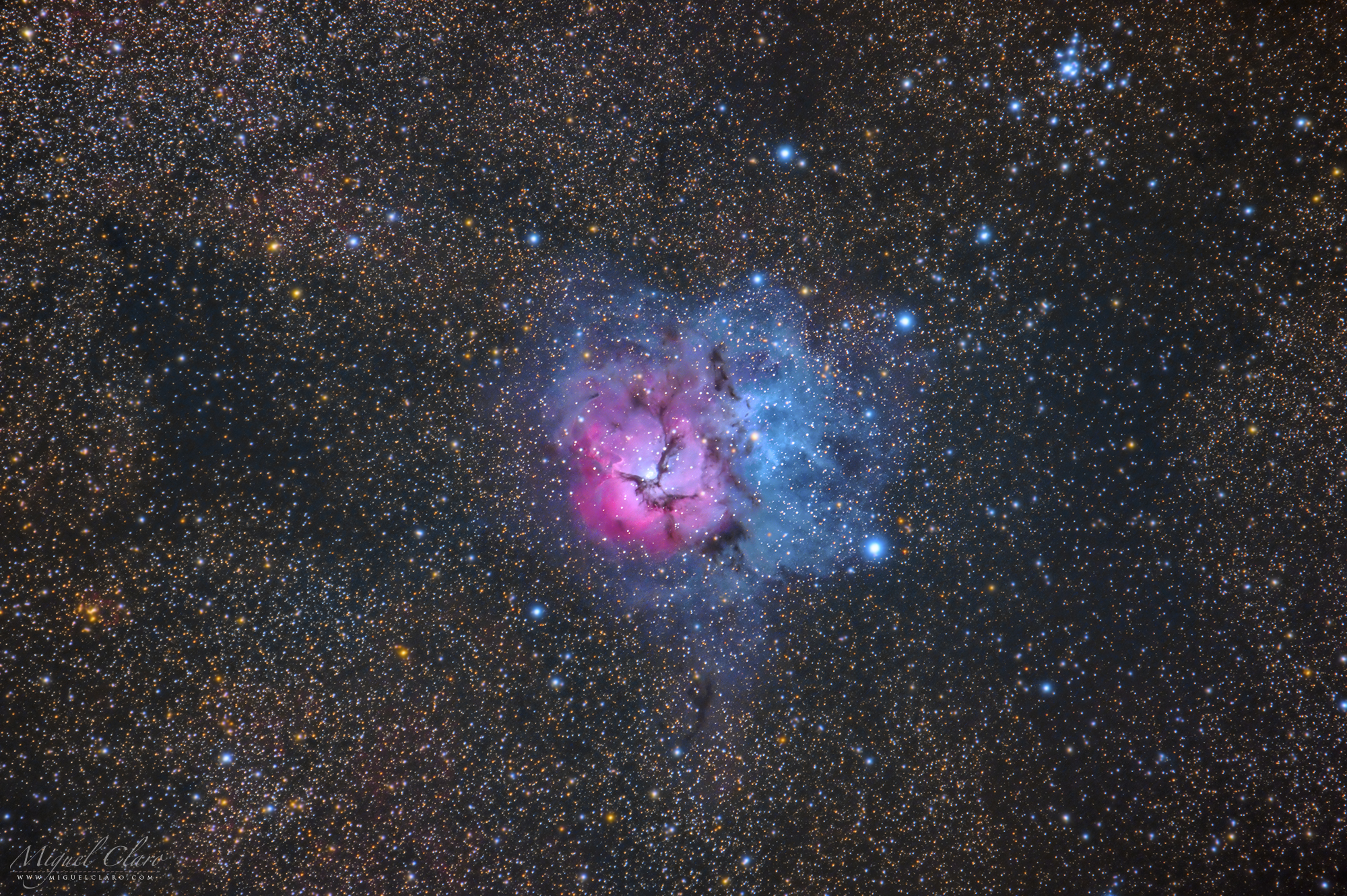Dazzling Trifid Nebula Glows in an Ocean of Stars (Photo)

Miguel Claro is a Lisbon, Portugal-based professional photographer, author and science communicator who creates spectacular images of the night sky. As a European Southern Observatory photo ambassador, a member of the international astrophotography project The World At Night and the official astrophotographer of the Dark Sky Alqueva Reserve, he specializes in astronomical "skyscapes" that connect Earth and the night sky. Join him here as he takes us through his photograph "The Trifid Nebula Between a Colorful Ocean of Stars."
The magnificent Trifid Nebula, also known NGC 6514, is a bright cloud of cosmic dust and gas that serves as a stellar nursery for newborn stars.
It lies about 5,000 light-years away from Earth in the nebula-rich constellation of Sagittarius the Archer. It was discovered in 1764 by the French astronomer Charles Messier, who originally cataloged it as Messier 20, or M20. Its nickname comes from the Latin word "trifid," meaning "divided into three lobes," as dark, obscuring dust lanes appear to carve out three sections, just like a "peace" sign.
This colorful nebula shares a crowded star field with the open star cluster Messier 21, which can be seen at the top right of this beautiful deep-sky scene immersed in a colorful ocean of stars. Estimates of the distances to both objects are about the same, but besides the gorgeous skyscape scene that these two entities share, there is no apparent connection between them. [50 Fabulous Deep-Space Nebula Photos]
Trifid does illustrate three different types of astronomical nebulas: a red emission nebula dominated by light from hydrogen atoms (the lower, red-violet portion), a blue nebulaproduced by dust reflecting starlight (the upper, blue portion), and dark nebulas that form the three prominent dust lanes, which are collectively known as Barnard 85.
The entire Trifid Nebula spans about 40 light-years across and is a mere 300,000 years old. It is a star-forming region in the Scutum spiral arm of the Milky Way, and is one of the youngest star-forming regions in our sky with newborn and embryonic stars embedded in its natal dust and gas clouds. A hot young star in the center illuminates the surrounding clouds.
To capture this image of the Trifid Nebula, I used a Takahashi FSQ-106ED refractor telescope with an Extender-Q 1.6x and an EM-200 auto-guided mount with a Nikon D810a DSLR astrophotography camera, set to DX format (1.5x). The camera was programmed to shoot with an ISO setting of 2500 and an exposure time of 240 seconds. The final composite combines 13 frames with a combined exposure time of 52 minutes. Image processing was completed with PixInsight 1.8 and Adobe Photoshop CS6.
Get the Space.com Newsletter
Breaking space news, the latest updates on rocket launches, skywatching events and more!
The image was taken from Noudar Park, Barrancos, in the Dark Sky Alqueva Reserve, Portugal.
To see more of Claro's amazing astrophotography, visit his website: miguelclaro.com. Follow us @Spacedotcom, Facebook and Google+. Original article on Space.com.
Join our Space Forums to keep talking space on the latest missions, night sky and more! And if you have a news tip, correction or comment, let us know at: community@space.com.









